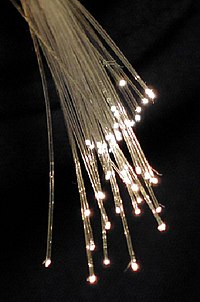
Photo from wikipedia
This paper studies the elastic-plastic seismic response of 12 inner and outer cable-supported latticed shell structures under fortification intensity and rare earthquakes. The influencing factors of the 12 models were… Click to show full abstract
This paper studies the elastic-plastic seismic response of 12 inner and outer cable-supported latticed shell structures under fortification intensity and rare earthquakes. The influencing factors of the 12 models were analyzed. These included span, initial pretension, bottom structure form, connection condition of support, rise-span ratio, and inner cable-supported latticed shell span. Based on the calculation results, we summarize the plastic region of the top latticed shell and the plastic development extent under 7-degree and 8-degree fortification intensity and rare earthquakes, the post-seismic cable force changes, and the development characteristics and distribution rules of residual deformation of top latticed shell. Our investigation indicates that the span, bottom structure form, and connection condition of the support are most sensitive to the elastic-plastic response of the inner and outer cable-supported latticed shell. A strong earthquake can cause a loss of pretension, which primarily happens at inner looped cables and inner inclined cables of the inner cable-supported latticed shell. Cable force change is more sensitive to the asymmetric bottom structure, the latticed shell with a high rise-span ratio, and the span of the inner cable-supported latticed shell. The inner and outer cable-supported latticed shell model loses less cable force after a strong earthquake, and the post-seismic loss ratio is less than 10%, even under the impact of a severe, 9-degree earthquake.
Journal Title: International Journal of Space Structures
Year Published: 2022
Link to full text (if available)
Share on Social Media: Sign Up to like & get
recommendations!